Q
What is the Road Tax Price of BYD Sealion 7? How to Calculate it?
Regarding the road tax price of the BYD Sealion 7 in Malaysia, the Malaysian government has not yet announced the specific calculation method for the road tax of this model. Since the road tax policy for electric vehicles (EVs) is different from that of traditional fuel - powered vehicles, it is usually based on the motor power (kW) or the vehicle weight. Taking the current road tax standard for electric vehicles as an example, the charge is about RM20 per kilowatt of motor power. If the Sealion 7 has a motor power of 150kW, the annual road tax would be approximately RM3,000. However, the final amount shall be subject to the announcement of the Road Transport Department (JPJ).
It's worth noting that the Malaysian government offers road tax exemptions for electric vehicles. For example, electric vehicles registered from 2023 to 2025 can enjoy a 100% exemption. Therefore, Sealion 7 owners may not need to pay road tax in the short term.
In addition, the maintenance cost of electric vehicles is generally lower than that of fuel - powered vehicles because routine replacement items such as engine oil and transmission fluid are eliminated. However, battery life and warranty terms (such as BYD's 8 - year/160,000 - kilometer battery warranty) are also key points that owners need to pay attention to.
It is recommended to confirm the latest policies with BYD's Malaysian dealers or the JPJ before purchasing a car to accurately plan the vehicle - using cost.
Special Disclaimer: This content is published by users and does not represent the views or position of PCauto.
Related Q&A
Q
What segment does the BYD Sealion belong to?
The BYD Sealion is an electric vehicle positioned as a mid - sized SUV (D - Segment). It is mainly targeted at family users and consumers who pursue a sense of technology. Its body size and interior space meet the mainstream standards of this segment, which suits the Malaysian market's demand for practicality and comfort.
As a product of BYD's e - Platform 3.0, the Sealion is equipped with blade batteries and an intelligent electric four - wheel drive system. Its range and power performance are competitive in the same segment. Moreover, it supports fast - charging technology, which meets the local users' expectations for the convenience of electric vehicles.
In the Malaysian market, the mid - sized SUV segment is highly competitive. The entry of the Sealion provides consumers with more new - energy options. Its intelligent features, such as the DiPilot driving assistance system and the rotatable central control screen, also align with the local users' preference for technological configurations.
It's worth noting that the Malaysian government offers tax incentives for electric vehicles, which makes electric models like the Sealion more price - attractive. In addition, vehicles in this segment usually meet both the needs of urban commuting and light off - road driving, making them suitable for the diverse local driving scenarios.
Q
What is the Reslae Value of BYD Sealion?
As a new energy SUV, the second-hand resale value of the BYD Sealion in the Malaysian market will be influenced by various factors such as brand awareness, battery life, local after-sales network, and policy support. Currently, thanks to BYD's global advantage in electric vehicle sales and its battery technology accumulation, the residual value performance of its models in overseas markets is becoming more stable. However, when it comes to the Malaysian market, the resale value of the Sealion needs to refer to the data from local second-hand car platforms. Usually, it depreciates about 20 - 30% in the first year, which is lower than that of fuel vehicles in the same class. Since electric vehicles have lower maintenance costs and are supported by government tax incentives, in the long run, battery health (usually with an 8-year/150,000-kilometer warranty) and the popularity of charging facilities will become the key influencing factors. It is recommended that before purchasing a car, you compare the second-hand market conditions of models like the Tesla Model Y or Proton X90 in the same class, and keep an eye on the policy trends of new energy vehicles in Malaysia, such as import tax exemptions or charging subsidies. These will indirectly increase the demand for second-hand cars. Regular maintenance records and a complete transfer of the warranty can also significantly improve the residual value.
Q
What is the motor power of the BYD Sealion?
The BYD Sealion is a plug - in hybrid SUV with an engine displacement of 1498cc (1.5 liters), which falls within the common displacement range in the compact SUV market. It's well - suited for the daily commuting and family use of Malaysian consumers. As a new - energy vehicle, the Sealion combines the advantages of a traditional fuel engine and an electric motor, offering lower fuel consumption and higher environmental - friendliness while maintaining sufficient power output.
In the Malaysian market, the hybrid system of the BYD Sealion is particularly suitable for local road conditions. It can handle urban traffic congestion and meet the needs of long - distance driving. Moreover, BYD is a globally leading new - energy vehicle brand, and its technological maturity and reliability are widely recognized. The battery and electronic control system of the Sealion have also undergone strict tests to adapt to tropical climate conditions.
For Malaysian consumers, choosing the BYD Sealion not only allows them to enjoy the government's preferential policies for new - energy vehicles but also enables them to experience advanced hybrid technology. It's an ideal vehicle that combines practicality and environmental protection.
Q
What is the Engine applied in BYD Sealion?
The BYD Sealion is equipped with BYD's self-developed third-generation DM-i super hybrid system. Its core power consists of a high - efficiency 1.5L naturally aspirated engine and an electric motor. The maximum power of the engine is 81kW. When combined with the electric motor, the comprehensive output power can reach over 160kW, balancing fuel economy and power performance, which is suitable for both urban commuting and long - distance driving in Malaysia.
This engine adopts the Atkinson cycle technology with a thermal efficiency as high as 43%, significantly reducing fuel consumption. At the same time, it is paired with an E - CVT continuously variable transmission, providing a smooth driving experience. It's worth mentioning that BYD's DM - i technology is mainly driven by electricity, and the engine is mostly used as a high - efficiency generator. Therefore, in pure - electric mode, it can achieve quiet and zero - emission driving, while in hybrid mode, it has excellent range, which is very suitable for the diverse road conditions and environmental protection trends in Malaysia.
In addition, BYD also provides a long - term warranty for the battery pack, so users don't have to worry about battery durability issues. For Malaysian consumers, the BYD Sealion not only has the advantage of low operating costs but also can enjoy the local government's tax incentives for new energy vehicles. It is a hybrid model worthy of attention.
Q
When is the Launch Date of BYD Sealion?
The BYD Sealion was launched in Malaysia from February 23rd to 25th, 2024. Prior to that, pre-orders were officially opened on January 19th, and the estimated price is RM200,000. The vehicle comes in multiple versions. For example, the standard version is equipped with a Single Motor and an RWD (Rear-Wheel Drive) system, with a pure-electric range of 550 km; the long-range version also features a Single Motor and an RWD system, but its range reaches 700 km; the performance version is powered by a Dual Motor and an AWD (All-Wheel Drive) system, with a pure-electric range of 650 km.
It focuses on a sporty and youthful feel, adopting the "Ocean Aesthetics" design style. The interior is full of a sense of technology. It also supports DC fast-charging technology with a maximum power of 150 kW, and its safety is guaranteed by the "Blade Battery". Since its launch, it has attracted a lot of attention from consumers.
Q
What Are the Common Issues with the BYD Sealion? Learn Before You Buy!
Before buying the BYD Sealion, it’s worth looking into some potential issues reported by early owners.
Some users have mentioned battery system glitches and occasional powertrain faults. In a few cases, the vehicle pulled to one side even after a four-wheel alignment. There were also reports of abnormal noises from the front suspension, which, although resolved after multiple repairs, appeared fairly frequently.
Other concerns included intermittent charging problems at the slow-charging port, which service centers struggled to diagnose. One owner noted that the power tailgate once failed to close properly.
Interior complaints included seat sagging, rust on metal components, and malfunctioning memory seat functions that failed to recall saved positions. There were also isolated issues like mirror vibration noise, dashboard warning messages, driver monitoring failures, inconsistent behavior in the ADAS system, problems with the wireless phone charger, and unusual streak marks on the front bumper in rainy conditions.
That said, it's not unusual for new vehicles to have some teething problems. BYD is actively working to improve product quality and after-sales support. We recommend checking real-world user reviews and long-term ownership reports to make an informed decision based on your needs and expectations.
Q
What is the Size of the BYD Sealion Tyre? Check Standard Here!
The BYD Sealion is equipped with 18-inch rims, and its tire specification is 225/50 R18, with the same tire specifications for both the front and rear. This tire specification is carefully designed. The "225" indicates that the tire width is 225 millimeters. A wider tire can provide a larger contact area with the ground, thereby enhancing the vehicle's grip during driving, especially during acceleration, braking, and high-speed driving, making the vehicle's handling more stable and safe. The "50" represents the aspect ratio, which means the tire thickness is 50% of the width. A moderate aspect ratio balances comfort and handling, effectively filtering road bumps and bringing a comfortable driving and riding experience for the passengers inside the vehicle. The "R" stands for the radial tire structure. Tires with this structure have good heat dissipation and low rolling resistance, which can improve fuel economy or extend the driving range. The "18" refers to the rim diameter of 18 inches, which complements the overall body design and shows a dynamic style.
Q
What is BYD Sealion? Here's the Full Introduction for You!
The BYD Sealion is a pure-electric mid-to-large-sized sedan that emphasizes a sporty and youthful appeal. It features an eye-catching exterior design, including sharp LED headlight clusters, water ripple daytime running lights, an elegant Coupe-style sloping roof, 19-inch sporty alloy wheels, and droplet-shaped LED taillight clusters. The interior follows the "Ocean Aesthetics" design concept and is equipped with a 10.25-inch full LCD instrument panel, a leather multi-functional steering wheel, a 15.6-inch rotatable LCD entertainment system, ambient lighting, and an electronic gear lever, exuding a high-class and tech-savvy vibe.
In Malaysia, there are three trim levels available: Dynamic, Premium, and Performance. The entry-level Dynamic trim is powered by a rear-mounted electric motor with 204 horsepower. It can accelerate from 0 to 100 km/h in 7.5 seconds. The battery has a capacity of 61.4 kWh, offering a range of up to 460 km under the WLTP test standard or 510 km under the NEDC standard. The Premium trim also has a rear-mounted single motor, but with 313 horsepower. It can achieve 0-100 km/h acceleration in 5.9 seconds. The battery capacity is 82.5 kWh, providing a range of 570 km (WLTP) or 650 km (NEDC). The Performance trim comes with a dual-motor all-wheel-drive system, delivering even more powerful performance. Additionally, the Sealion supports a maximum DC fast-charging technology of 150 kW and is paired with the "Blade Battery", ensuring high safety standards.
Q
Need a Loan for BYD Sealion? Here's How to Calculate It!
To calculate the loan for the BYD Sealion, you can start from the following aspects. First, you need to clarify that the formula for calculating loan interest is Loan Interest = Borrowed Amount × Loan Term × Interest Rate. However, in reality, it will be more complicated due to compound interest and other fees.
Regarding loan plans, there are different down - payment ratios. Commonly, there are 20%, 30%, 40%, 50%, 60%, etc. The higher the down - payment ratio, the less the loan amount will be, and the monthly payment and total interest will also change accordingly. The repayment terms usually include options such as 12 months, 18 months, 24 months, and 36 months. With a short - term repayment term, the monthly repayment amount is high, but the total interest is low. The situation is the opposite for a long - term repayment term.
There are two repayment methods: equal - principal - plus - interest and equal - principal. For equal - principal - plus - interest, the monthly repayment amount is fixed, and the proportion of interest in the early stage is large. For equal-principal, the monthly repayment amount decreases, and the interest also decreases accordingly.
In addition, the interest rates of different banks and financial institutions vary. You should compare and choose the institution with a lower interest rate. At the same time, pay attention to whether there are additional fees such as handling fees and insurance premiums. By considering all these factors comprehensively, you can calculate a loan plan that suits your financial situation.
Q
What is the Top Speed of BYD Sealion? Click Here to Figure it out!
The top speed of the BYD Sealion can reach 180 kilometers per hour. This performance is sufficient to meet the daily driving and high-speed cruising needs of Malaysian users, while also taking into account fuel economy and environmental protection features. Considering the hilly terrain and congested urban roads in Malaysia, the Sealion's hybrid power system can flexibly switch between power modes. In pure-electric mode, it offers a quiet experience for short-distance commuting, and in hybrid mode, it can give full play to the advantages of combined power.
It's worth noting that the tropical climate in Malaysia places high demands on battery heat dissipation performance. BYD's blade battery technology has good thermal stability, and when combined with an intelligent temperature control system, it can effectively handle high-temperature environments. During actual driving, it is recommended that car owners regularly check the battery's health status and rationally plan charging arrangements during long-distance trips to fully unleash the vehicle's performance.
In addition, the Malaysian government offers tax incentives for new energy vehicles. Buying a vehicle like the Sealion allows owners to enjoy a certain degree of tax relief, making the Sealion more competitive in terms of cost-effectiveness.
Latest Q&A
Q
What is the CC of Honda City 2020?
The 2020 Honda City hits the Malaysian market with two engine choices: a 1.5-liter SOHC i-VTEC naturally aspirated petrol engine and a 1.5-liter DOHC i-VTEC hybrid system. Let's break down the specs. The petrol unit displaces 1497cc, cranking out 121 horsepower and 145 Nm of torque. On the hybrid side, it pairs that same 1.5-liter engine with an electric motor, resulting in a combined 109 horsepower – this one's all about fuel sipping efficiency.
Now, CC (cubic centimeters) is the measure of engine displacement, and it directly impacts how a car performs and drinks fuel. Typically, a bigger displacement means more power, but it can also mean higher fuel bills. The City's 1.5-liter sweet spot is a big reason it's so popular in Malaysia – it strikes that perfect balance between pep and fuel economy, handling both city commutes and longer drives like a champ.
But the 2020 City isn't just about the engine bay. It also comes loaded with Honda Sensing safety tech and a modern, fresh interior design, which really ups its game in the market. For Malaysian buyers, this car ticks all the boxes: practical, easy on the wallet at the pump, and packed with the latest tech. It's a solid all-rounder.
Q
How much does a Honda 2020 cost?
Prices for the 2020 Honda models in Malaysia vary quite a bit depending on the specific model and how it's kitted out. Take the Honda City, for example – you're looking at roughly RM70,000 to RM90,000. The Civic sits a bit higher, usually ranging from around RM110,000 up to RM140,000, while the CR-V typically falls between RM140,000 and RM170,000. exact figures hinge on the trim level, engine specs, and any extra add-ons you might go for.
When buying a new car in Malaysia, it's not just the sticker price you need to factor in. There's registration fees, insurance, road tax – all that extra stuff adds up and affects the final on-the-road cost.
Over in the used car market, 2020 Honda models will fluctuate in price too, based on mileage, condition, and remaining warranty. You can generally pick one up for 20% to 40% less than a brand-new equivalent.
If you're in the market, I'd definitely recommend shopping around different dealers to compare quotes. It's also worth checking out any ongoing Honda promotions or financing deals – those can really help you save some cash.
Hondas have a solid rep in Malaysia for being reliable and fuel-efficient, especially popular models like the City and Civic. They're pretty affordable to own long-term, and getting them serviced or repaired is relatively straightforward.
Q
What is the top speed of Honda City 2020?
The 2020 Honda City maxes out at around 190 km/h, which is the top speed you can squeeze out of its 1.5-liter i-VTEC naturally aspirated engine under ideal conditions. Of course, in the real world, you might see a slight difference depending on road conditions, how much you're carrying, or the weather. This car is pretty popular in the Malaysian market, and it's not just because of its solid performance—it's also about that fuel efficiency and nimble handling that makes city driving a breeze. The CVT gearbox in the City does a good job smoothing out power delivery, so acceleration feels seamless and efficient, whether you're commuting daily or hitting the highway for a longer drive. For Malaysian buyers, beyond just top speed, overall performance and maintenance costs matter a lot, and the City delivers here too. Its low trouble rate and wide service network make life easier for owners. If you're craving a bit more zip, there's always the Honda City RS variant. It gets some tweaks to the engine tuning and sportier bits, but don't expect a huge jump in top speed—these cars are all about balancing practicality with a bit of driving fun, after all.
Q
How safe is the Honda City 2020?
The 2020 Honda City holds its own when it comes to safety, packing in 6 airbags, Vehicle Stability Assist (VSA), Anti-lock Braking System (ABS), and Electronic Brake-force Distribution (EBD). That's a pretty solid setup for the class, and it should do a good job of keeping you protected during those daily drives around Malaysia. Honda's ACE Body Structure is also on board here, which is designed to effectively disperse crash energy and boost occupant safety in the event of a collision. It's worth highlighting that the 2020 City scored a 5-star rating in ASEAN NCAP crash tests, which is a solid stamp of approval for its safety credentials. For Malaysian buyers, picking this car means you're not just getting Honda's usual reputation for reliability, but also a decent level of safety kit. If safety is a top priority for you, it's definitely worth checking out the specific safety features when you're looking to buy – things like whether it comes with Honda Sensing. That suite includes handy advanced features like Adaptive Cruise Control and Lane Keeping Assist, which can go a long way in making your drives even safer.
Q
What is the fuel economy of the Honda City 2020?
The 2020 Honda City demonstrates excellent fuel efficiency in the Malaysian market. The variant equipped with the 1.5L i-VTEC petrol engine and CVT transmission has an official combined fuel consumption of 5.4 L/100km (approximately 18.5 km/L). The hybrid e:HEV variant is designed for even higher efficiency, though its specific fuel consumption figure should be verified with official sources or latest reviews, as the widely cited 3.4 L/100km (approximately 29.4 km/L) lacks direct support in the provided search results and may not reflect real-world conditions in Malaysia. Both powertrains closely align with the demands of Malaysian consumers who prioritize fuel economy. Actual fuel consumption may vary depending on factors such as driving habits, road conditions, and vehicle load. Therefore, adhering to a regular maintenance schedule is crucial for maintaining optimal fuel efficiency.
Given Malaysia's hot and humid climate, judicious use of the air conditioning system and maintaining the recommended tire pressure can contribute significantly to improving fuel economy. As a top-selling model in the B-segment sedan market in Malaysia, the Honda City's fuel efficiency remains competitive against its peers, making it a practical choice for daily commuting and family use. The e:HEV hybrid version, in particular, presents a compelling option for environmentally conscious drivers seeking to minimize long-term running costs, pending verification of its specific fuel economy claims.
View MoreRelated News
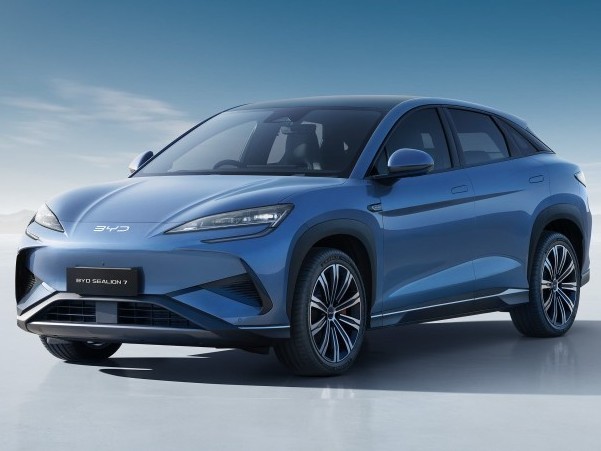
Best Value Pick! BYD Sealion 7 Delivers Excellent Range & Luxurious Features
MichaelApr 17, 2025
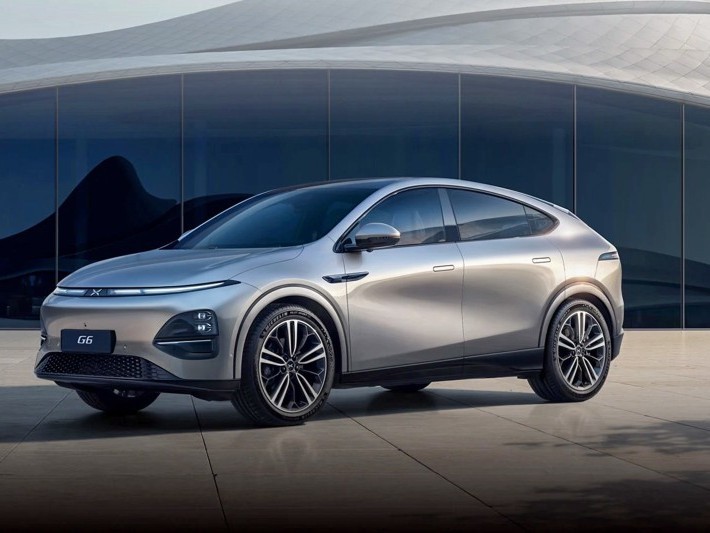
Try electric travel, which is more fun, BYD Sealion 7 or Xpeng G6?
MichaelDec 12, 2024
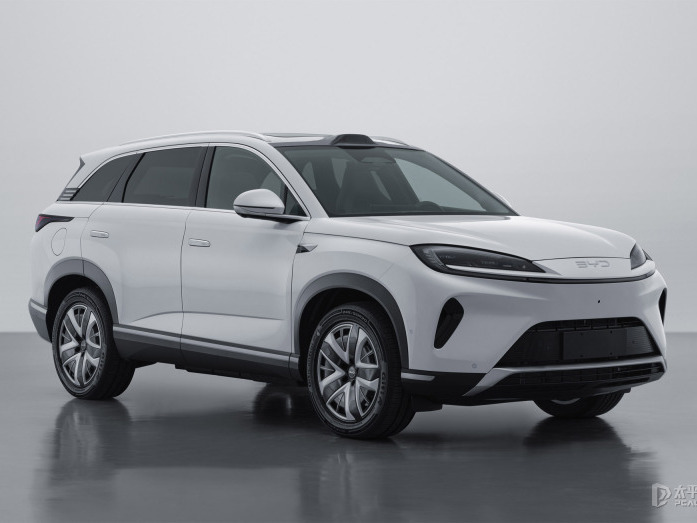
BYD Sealion 07 DM-i declaration image exposed: Fifth-generation DM technology, 0-100km in 4.9s!
LienDec 10, 2024
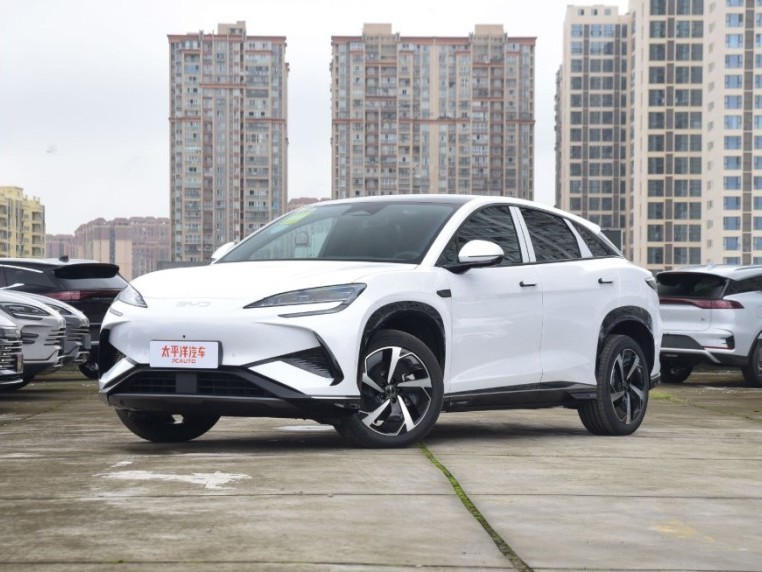
BYD SEALION 7 Thailand Motor Expo 2024 stealing the show: High cost-performance ratio, rich configuration!
JamesNov 29, 2024
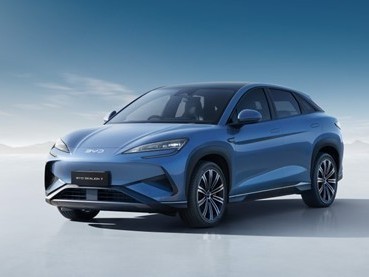
BYD SEALION 7 EV debuts in Malaysia, becoming the biggest competitor to Tesla Model Y
WilliamNov 20, 2024
View More




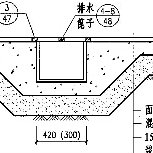




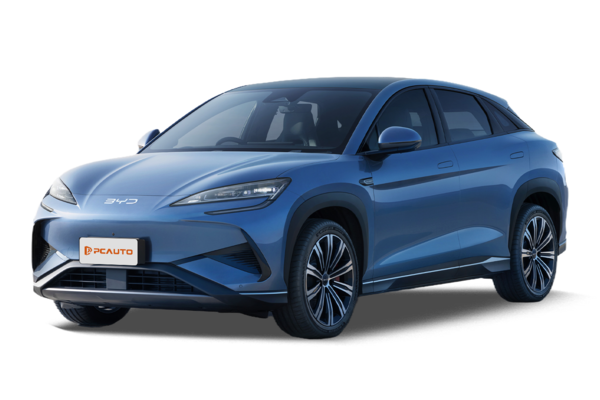





Pros
Cons